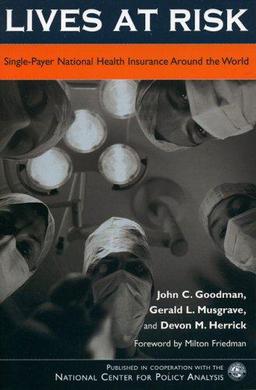Lives at Risk
Lives at Risk is a term often used to describe situations where individuals are in immediate danger of losing their lives. This can occur in various contexts, including medical emergencies, natural disasters, armed conflicts, and other critical incidents. The term underscores the urgency and severity of the situation, necessitating prompt and effective intervention to prevent loss of life.
Contexts of Lives at Risk[edit | edit source]
Medical Emergencies[edit | edit source]
In the context of healthcare, lives at risk often refer to patients experiencing life-threatening conditions such as heart attacks, strokes, severe trauma, or sepsis. Immediate medical intervention is crucial in these scenarios to stabilize the patient and provide necessary treatment.
Natural Disasters[edit | edit source]
Natural disasters such as earthquakes, hurricanes, tsunamis, and wildfires can put numerous lives at risk. These events often result in widespread destruction, leading to injuries, fatalities, and displacement of populations. Emergency response teams, including first responders, play a critical role in rescuing individuals and providing aid.
Armed Conflicts[edit | edit source]
During armed conflicts and wars, civilians and combatants alike face significant risks to their lives. The presence of explosive devices, gunfire, and other forms of violence can lead to high casualty rates. Humanitarian organizations often work in these areas to provide medical care, food, and shelter to those affected.
Critical Incidents[edit | edit source]
Other critical incidents that can put lives at risk include industrial accidents, terrorist attacks, and transportation accidents. These situations require coordinated efforts from various agencies to manage the crisis and ensure the safety of individuals involved.
Response and Management[edit | edit source]
Effective management of situations where lives are at risk involves several key components:
- **Preparedness:** Developing and implementing emergency plans and conducting regular drills.
- **Response:** Rapid deployment of emergency services, including paramedics, firefighters, and law enforcement.
- **Recovery:** Providing medical care, psychological support, and rebuilding efforts to help affected individuals and communities recover.
See Also[edit | edit source]
Categories[edit | edit source]
Search WikiMD
Ad.Tired of being Overweight? Try W8MD's NYC physician weight loss.
Semaglutide (Ozempic / Wegovy and Tirzepatide (Mounjaro / Zepbound) available. Call 718 946 5500.
Advertise on WikiMD
|
WikiMD's Wellness Encyclopedia |
| Let Food Be Thy Medicine Medicine Thy Food - Hippocrates |
Translate this page: - East Asian
中文,
日本,
한국어,
South Asian
हिन्दी,
தமிழ்,
తెలుగు,
Urdu,
ಕನ್ನಡ,
Southeast Asian
Indonesian,
Vietnamese,
Thai,
မြန်မာဘာသာ,
বাংলা
European
español,
Deutsch,
français,
Greek,
português do Brasil,
polski,
română,
русский,
Nederlands,
norsk,
svenska,
suomi,
Italian
Middle Eastern & African
عربى,
Turkish,
Persian,
Hebrew,
Afrikaans,
isiZulu,
Kiswahili,
Other
Bulgarian,
Hungarian,
Czech,
Swedish,
മലയാളം,
मराठी,
ਪੰਜਾਬੀ,
ગુજરાતી,
Portuguese,
Ukrainian
Medical Disclaimer: WikiMD is not a substitute for professional medical advice. The information on WikiMD is provided as an information resource only, may be incorrect, outdated or misleading, and is not to be used or relied on for any diagnostic or treatment purposes. Please consult your health care provider before making any healthcare decisions or for guidance about a specific medical condition. WikiMD expressly disclaims responsibility, and shall have no liability, for any damages, loss, injury, or liability whatsoever suffered as a result of your reliance on the information contained in this site. By visiting this site you agree to the foregoing terms and conditions, which may from time to time be changed or supplemented by WikiMD. If you do not agree to the foregoing terms and conditions, you should not enter or use this site. See full disclaimer.
Credits:Most images are courtesy of Wikimedia commons, and templates, categories Wikipedia, licensed under CC BY SA or similar.
Contributors: Prab R. Tumpati, MD

